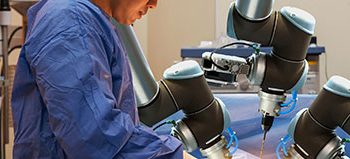The global microcarriers market is projected to reach USD 1.61 billion by 2023 from USD 1.20 billion in 2018, at a CAGR of 6.0%. This emerging market consists of several large to medium-sized companies that are competing with each other to increase their share in different segments of the market. In 2017, the microcarriers (beads) market was majorly dominated by GE Healthcare (US), Danaher Corporation (US), and Corning Inc. (US).
Thermo Fisher Scientific was the leading player in the overall microcarriers market in 2017. The leading position of the company can be attributed to its strong brand image and robust product portfolio. The company significantly focuses on investing in R&D activities to launch new and advanced products. For instance, in 2017, the company launched the Gibco B-27 Plus Neuronal Culture System, Gibco StemFlex Medium (February 2017), and Thermo Scientific Nunc Edge 2.0 plate (July 2016). Furthermore, in June 2015, Thermo Fisher Scientific invested USD 10.6 million (GBP 14 million) to expand its existing facility in Scotland. Thermo Fisher Scientific is an innovation-centric company which significantly invests in R&D to maintain its leading position. It invested USD 888 million and USD 755 million in R&D in 2017 and 2016 respectively. The company has a strong promotional strategy and participates in various trade exhibitions, seminars, and workshops to promote its products. The company’s efforts towards enhancing its production capacity, its focus on R&D, and the launch of new products are expected to help it maintain its leading position in the market.
To know the Insights, download the pdf brochure
Merck KGaA held the second largest share of the global microcarriers market in 2017. The company has a strong portfolio of microcarrier-based cell culture products, including equipment, media, reagents, and sera. To maintain its strong position in the market, the company focuses on adopting organic as well as inorganic growth strategies such as acquisitions and product launches. For instance, in November 2015, the company acquired Sigma-Aldrich Corporation (US) for USD 17 billion. This acquisition was one of the largest in the industry bringing established brands such as Millipore, Sigma-Aldrich, Milli-Q, SAFC, Supelco, and BioReliance to the customers. Furthermore, the company has a well-organized supply chain which delivers standard products in 24 to 48 hours worldwide. In July 2016, Merck invested USD 115 million to set up a new multi-faceted Life Science campus in Burlington, Massachusetts, (US) that will serve as a hub for the North American life science business of Merck. The company focuses on product launches. Some of its recent launches are EX-CELL Advanced HD Perfusion Medium (May 2017), Millistak+ HC Pro (September 2017), Mobius 2000 liter, single-use bioreactor (June 2015), and CHO platform of cell culture media (June 2015). Such developments will help expand the company’s presence in the microcarriers market.
Some of the other major players operating in the medical device connectivity market include Eppendorf (Germany), HiMedia Laboratories (India), Sartorius AG (Germany), Lonza (Switzerland), and Becton, Dickinson and Company (US),


